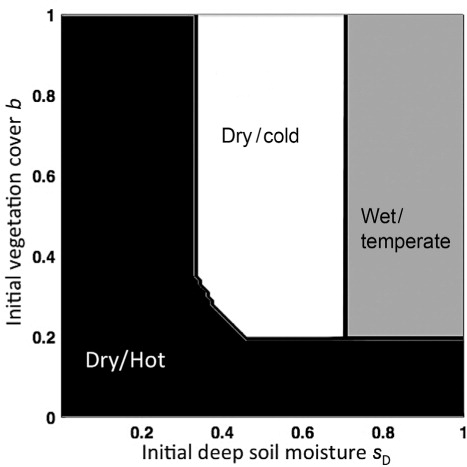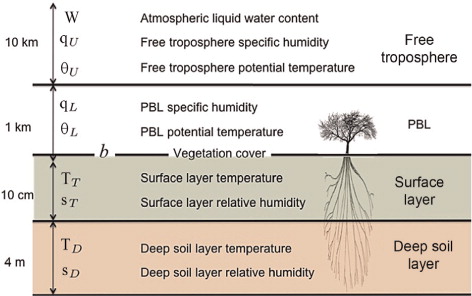Figures & data
Fig. 2. Panel (a) shows a scheme of the energy balance: incoming solar radiation travels through the atmosphere, which is transparent to short-wave radiation, but a part of it is reflected by clouds. Surface heating depends on the surface albedo, which is a function of vegetation cover. The surface layer emits long-wave (infrared) radiation upwards. Arrows in the atmosphere show absorption/emission of thermal radiation by the different layers. Panel (b) shows a scheme of the water cycle. Water vapour in the PBL is uplifted by convective fluxes. Water then may condensate in the free troposphere and precipitate as rainfall. Evapotranspiration has the essential role of transferring water back into the atmosphere. Without this effect, the deep soil reservoir would not take part in the cycle, and after some losses water would remain stored there.
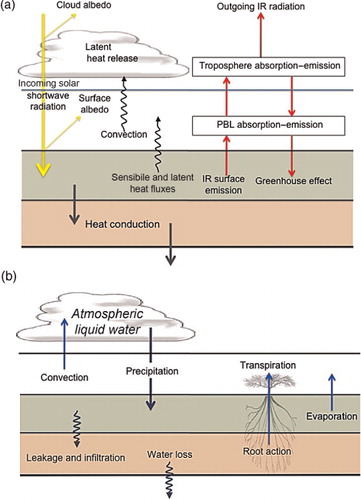
Table 1. Parameter names, symbols, values and unit of measurements
Fig. 3. Equilibrium potential temperature in the PBL for the parameter values indicated in the Appendix, as a function of the initial conditions on s
D
(x-axis) and on b (y-axis). The black area indicates the equilibrium state (dry and hot,
), the white area indicates state
(dry and cold,
), and the grey area indicate state
(wet and temperate,
).
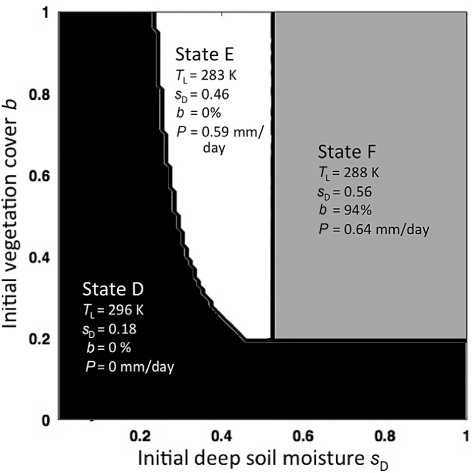
Fig. 4. Temporal dynamics of vegetation cover, starting from different initial conditions of deep soil moisture s
D
and vegetation cover b, and reaching three different states: (red dashed line),
(green continuous line), and
(blue dotted line). Note the different timescales needed to reach the various states. In these simulations, initial conditions used to reach state
are s
Di
=0.6, and b
i
=0.1; state
, s
Di
=0.5, and b
i
=0.5; state
, s
Di
=0.6, and b
i
=0.4.
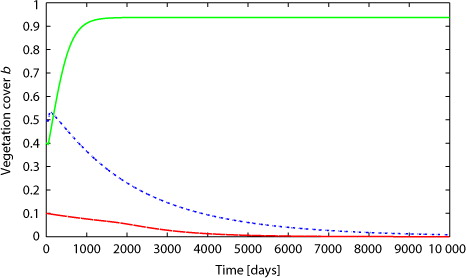
Fig. 5. Contour plot showing different θ
L
values in the three stable states, as in , but with a root depth Z
D
=1 m. In this case, the water available for the system is much less than in the standard configuration, therefore the wet/temperate state is reached only with larger initial values of s
D
and b. The black area indicates the state , the white area the state
and the grey area the state
.
